The Story of Ramie: From Seed to Finished Garment
Explore the fascinating history of this natural textile through stunningly detailed watercolors illustrating each step in the ramie process.
On view April–October 2024
Building Façade
The Story of Ramie: From Seed to Finished Garment showcases 19th-century images of Chinese ramie production, from cultivation to weaving, dyeing, and beyond.
The Science History Institute is pleased to announce a new outdoor exhibition exploring the fascinating history of ramie, a natural textile—similar to linen—whose making highlights the intersections and globe-spanning movements of fashion, craft, chemistry, and technology.
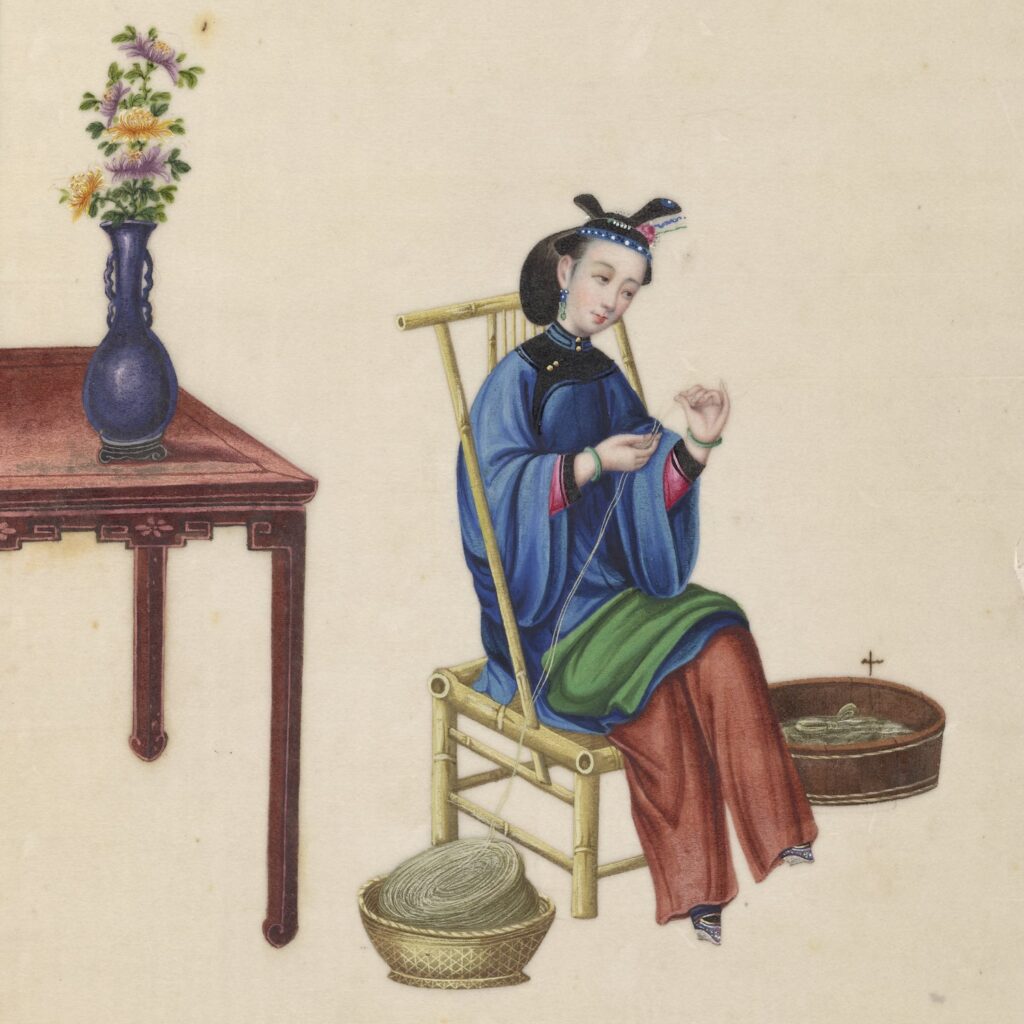
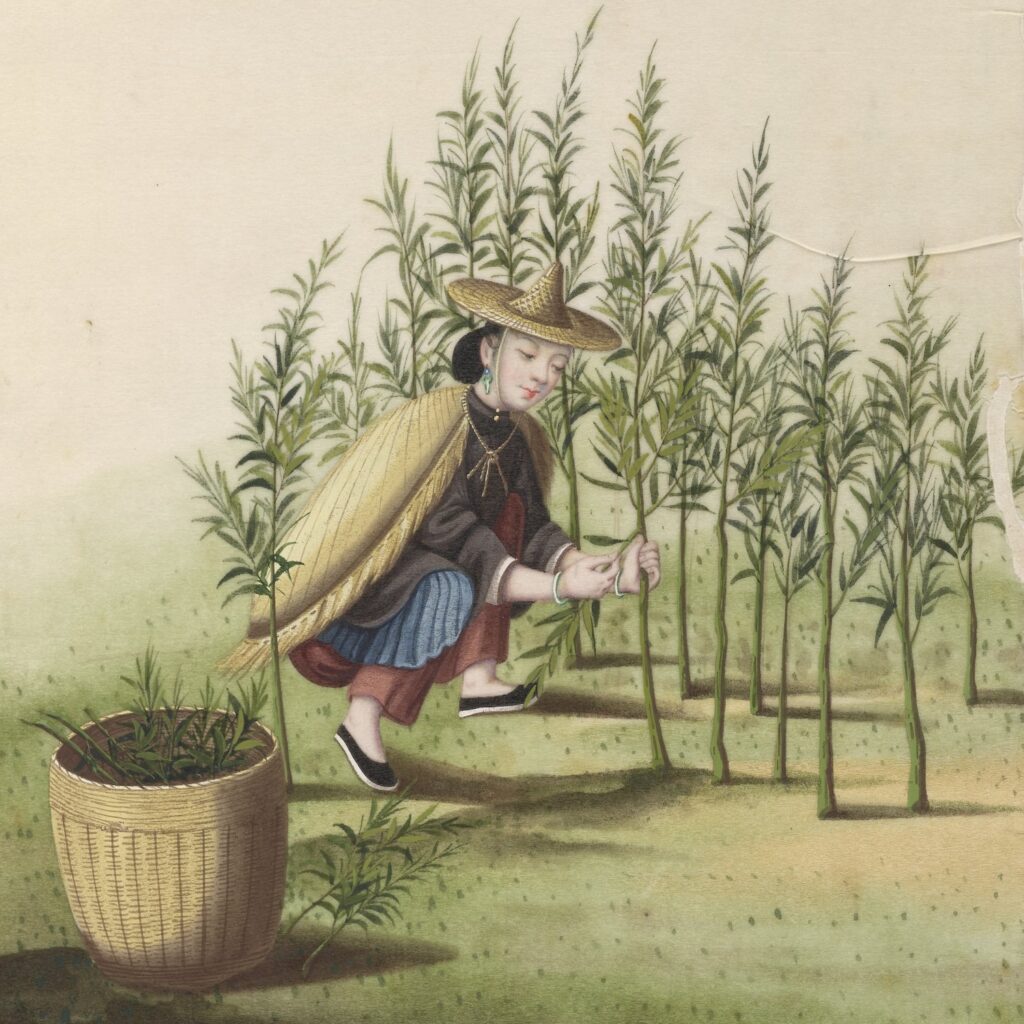
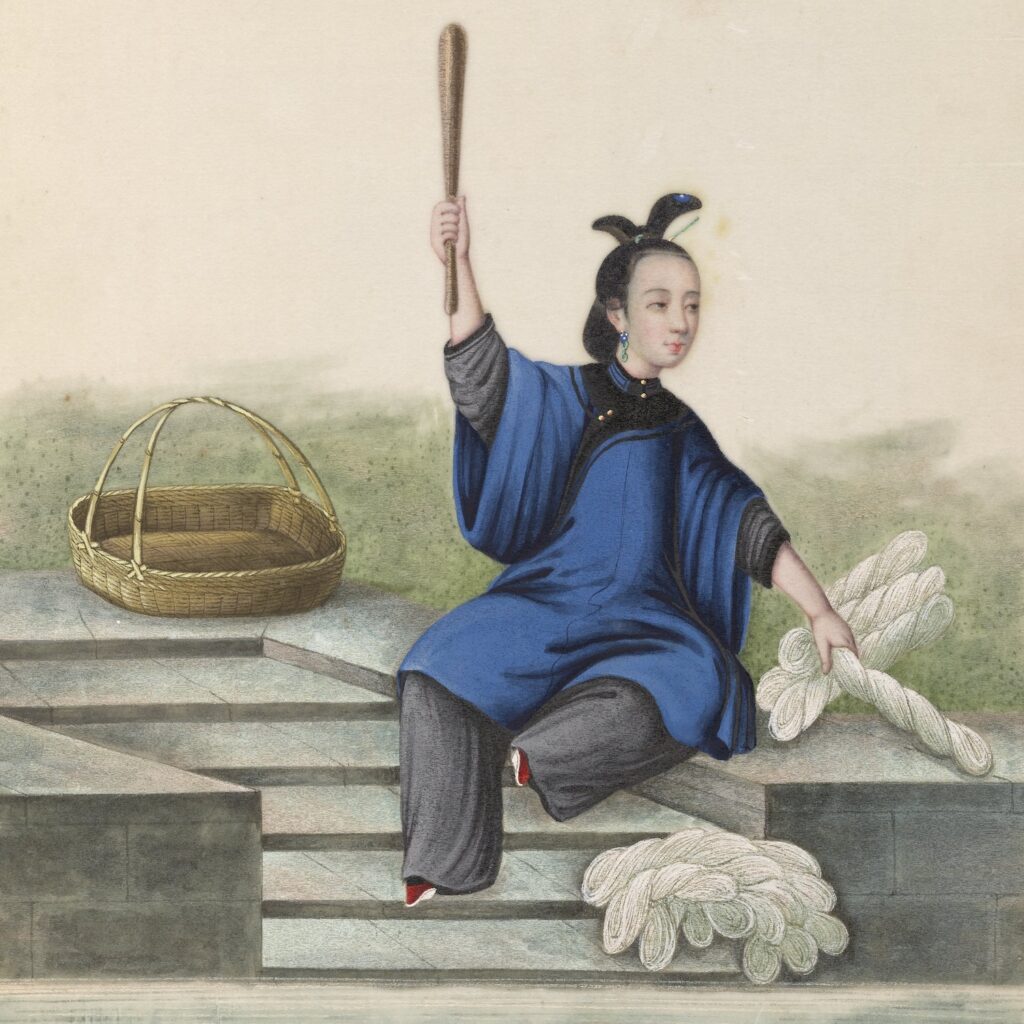
Stunningly detailed watercolors, produced between 1830 and 1860 by the late Qing dynasty painter Sunqua (active in Canton, now modern-day Guangzhou), illustrate each step in the ramie process. Stretching across three stories of the Institute’s Chestnut Street façade, The Story of Ramie will invite visitors to travel through time and across geography to understand how the technology of textiles connects the world—both then and now.
Ramie, a natural textile derived from fibrous plants in the nettle family, has a history that spans thousands of years. Ramie garments have been found in ancient Egyptian tombs and were once a vital commodity traded across the Silk Road. Sometimes called grass linen, grass cloth, or China linen, ramie can appear as luxurious as silk or as light as fine linen, and has a greater tensile strength than cotton.
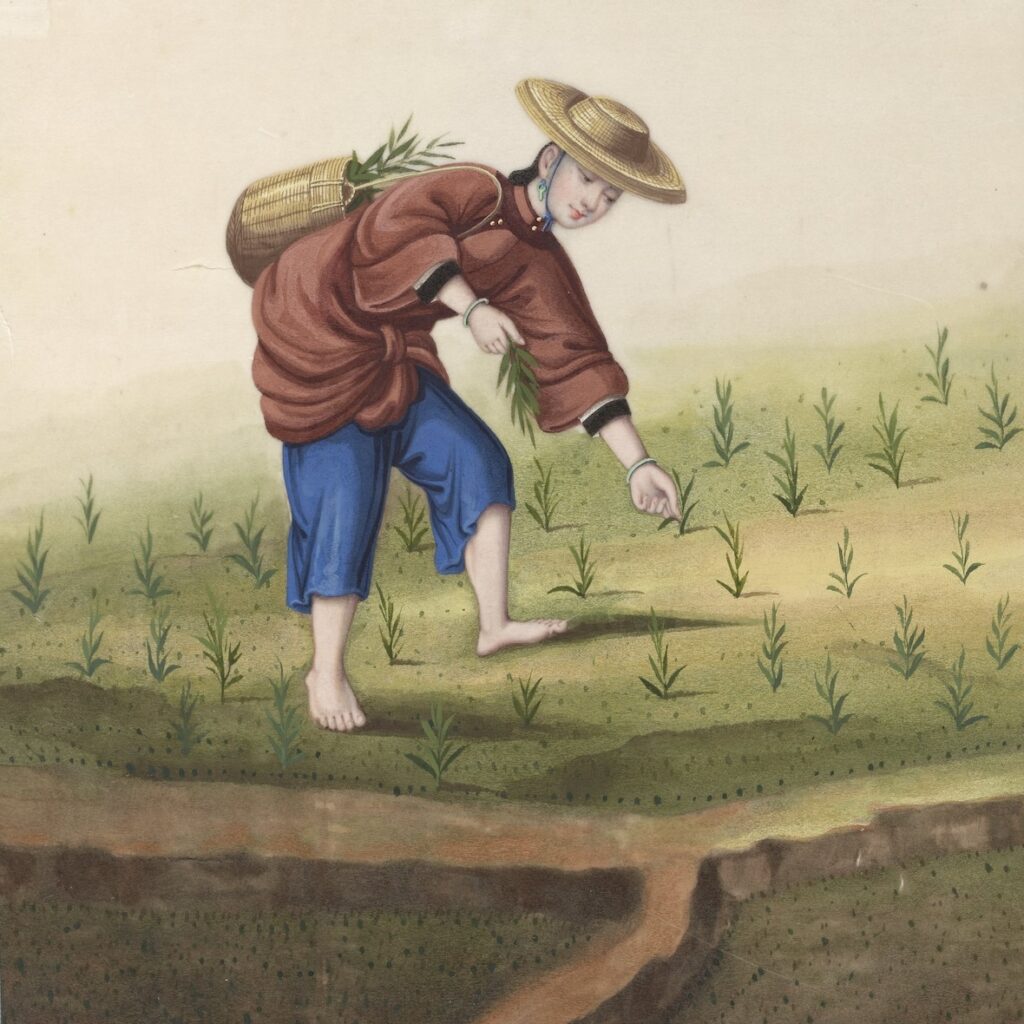
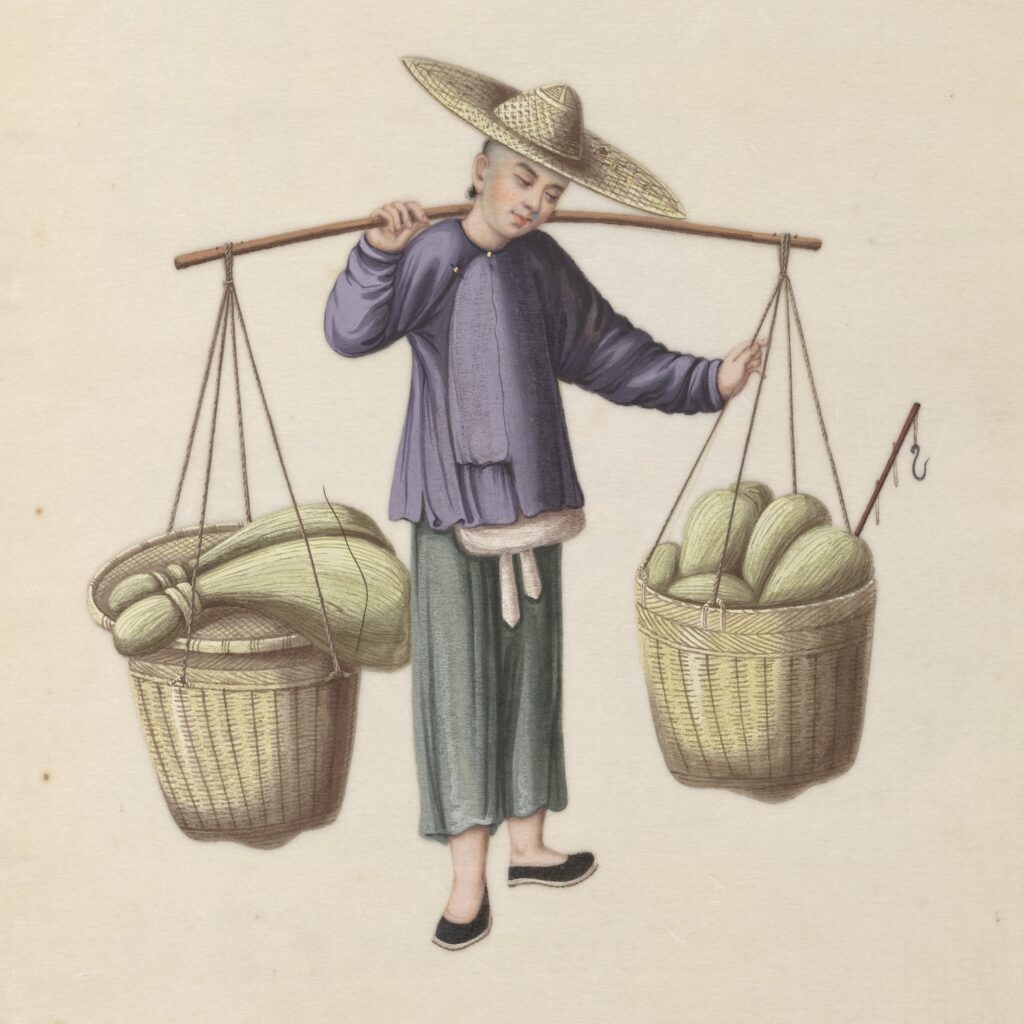
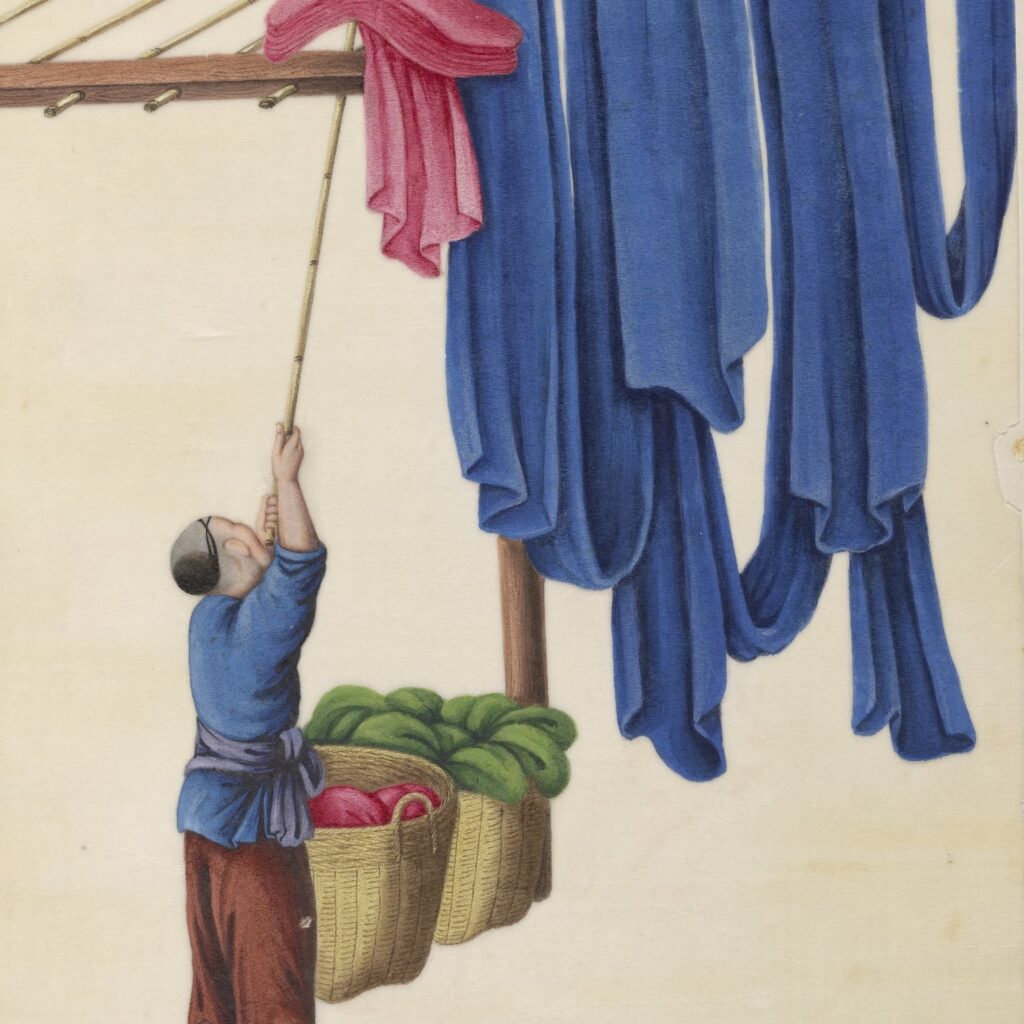
In the 18th and 19th centuries, Chinese ramie was exported to the West, along with images documenting the complex processes and technologies behind its production. Bound albums of watercolors, like those featured in The Story of Ramie, were designed to boost international buyers’ interests in Chinese-made luxury textiles: their detailed, step-by-step illustrations promise quality goods overseen by master artisans. These works are important reflections both of Qing-era China’s rapidly growing manufacturing capability and the already globalizing textile and dye market, where competition between local and imported products generated curiosity as well as tension.
Curator: Elisabeth Berry Drago
Design: Nathanael Roesch
Conservation of The Story of Ramie has been generously supported by the E. Rhodes and Leona B. Carpenter Foundation.
All images: The Story of Ramie from Seed to Finished Garment, Books 1–5, five brocade-bound sets of Chinese watercolor paintings depicting the process of producing ramie, ca. 1820–1870.
You might also like
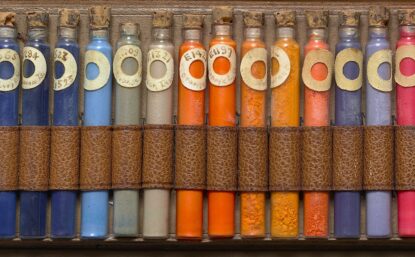
EXHIBITIONS
BOLD: Color from Test Tube to Textile
Take a colorful journey through more than 150 years of synthetic dye-making.
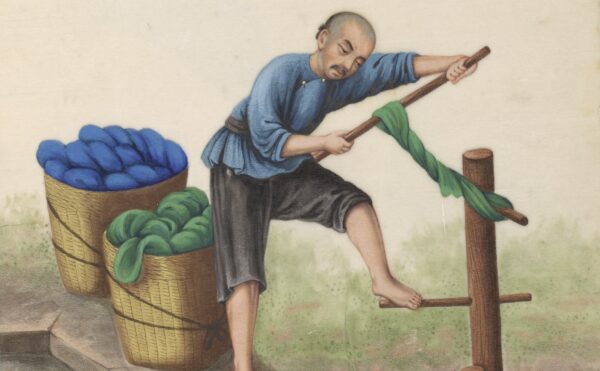
COLLECTIONS BLOG
Weaving History
What do Qing dynasty paintings reveal about the secret of degumming ramie?
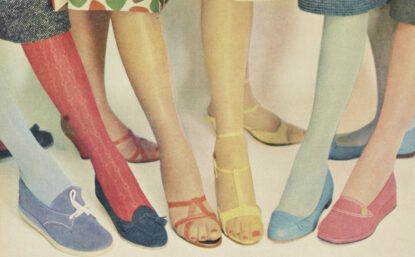
DIGITAL EXHIBITIONS
Nylon: From Labs to Legs
Discover the world’s first fully synthetic fiber and how it paved the way for countless other artificial materials.
